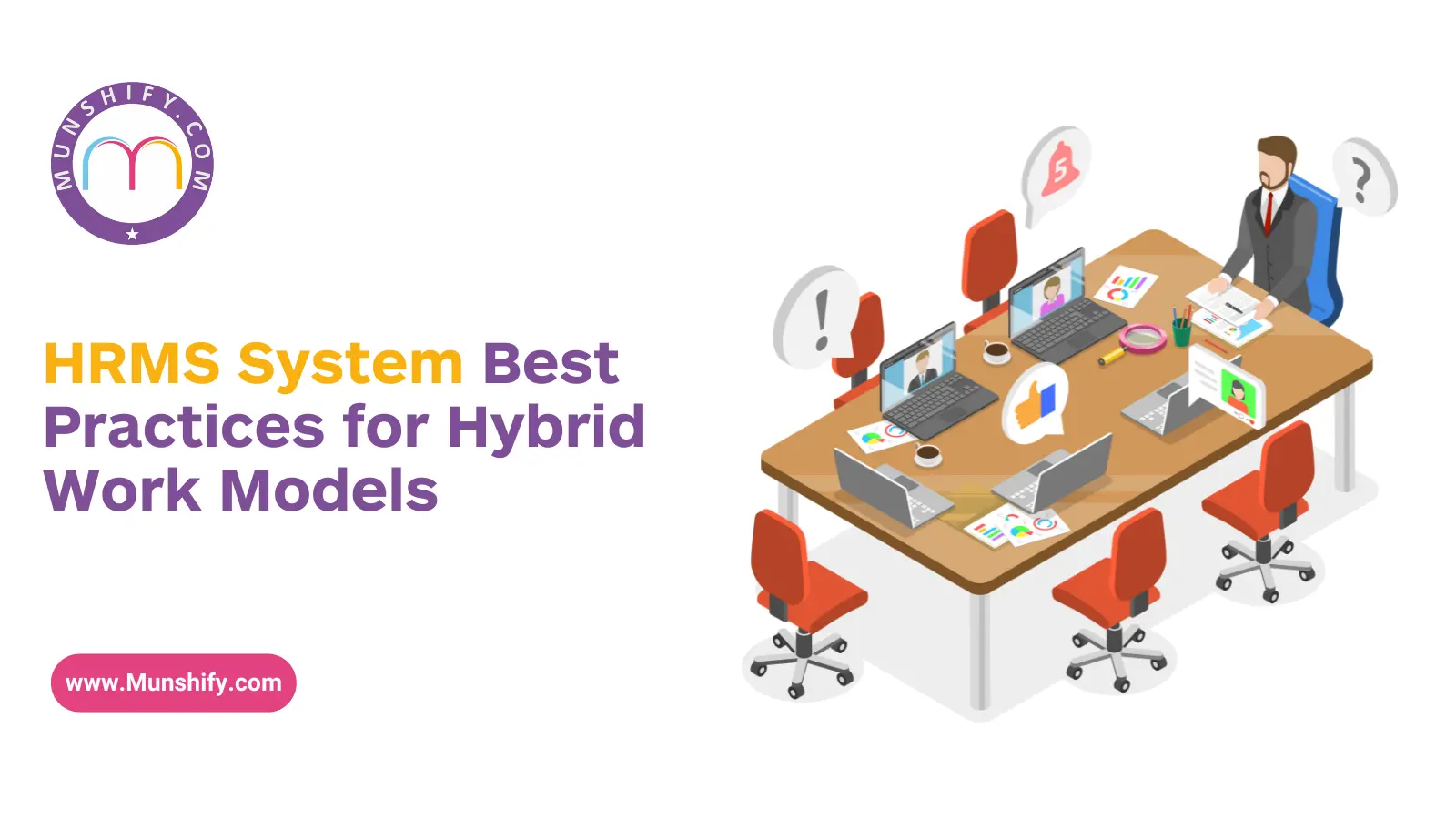As businesses adjust to the complexities of the hybrid work environment, managing human resources has become more challenging and nuanced than ever before. HRMS System (Human Resource Management System) platforms have evolved into vital tools, enabling organizations to manage and optimize their human resources regardless of location. HRMS tools provide an integrated solution to support both in-office and remote teams, offering features like payroll, attendance, talent management, and performance tracking.
However, as workplaces continue to blend virtual and physical spaces, more than simply implementing an HRMS system is required. Employers must leverage these systems strategically to foster connectivity, productivity, and Employee well-being across all work settings.
Understanding Hybrid Work Models and HRMS System
- Definition of Hybrid Work Models
Hybrid work models allow employees to split their work between remote and in-office settings. This flexibility supports a range of work schedules and caters to Employee preferences, allowing businesses to attract and retain diverse talent pools.
- Role of an HRMS System in Hybrid Work
An HRMS system helps employers effectively manage HR operations and facilitates seamless communication between teams, whether they’re remote or on-site. It enables better coordination, real-time updates, and a single platform for all HR functions.
- Components of an HRMS System in Hybrid Settings
Critical components of an HRMS tools for hybrid work include time tracking, project management, Employee engagement tools, and performance analytics. These helps bridge the gap between teams and ensure that employees are on the same page, regardless of location.
- Advantages of HRMS in Hybrid Work
An HRMS system offers streamlined workflows, improved accessibility, and greater transparency across distributed teams. This system also enables data-driven decision-making, helping employers adapt to the changing needs of a hybrid workforce.
Best Practices for Using HRMS Systems in Hybrid Work Models
- Implement User-Friendly Interfaces
Choose HRMS tools with an intuitive and user-friendly interface. Employees should be able to navigate the platform quickly, whether in the office or working remotely.
- Optimize for Mobile Access
Mobile accessibility is crucial in a hybrid work model. Ensure the HRMS system is optimized for smartphones and tablets, enabling employees to check schedules, request time off, and access important information from anywhere.
- Encourage Transparent Communication
An HRMS system should foster straightforward and open communication channels. Use the platform to inform employees about company updates, policies, and performance expectations.
- Enable Flexible Scheduling Options
Hybrid work requires adaptable scheduling. Use the HRMS system’s scheduling feature to accommodate Employee availability and preferences, ensuring fair and manageable work hours.
- Leverage Real-Time Analytics
An HRMS real-time analytics can provide insights into productivity, Employee satisfaction, and Team performance. Use these analytics to make data-driven adjustments to your hybrid work policies.
- Automate Administrative Tasks
Automate routine tasks like payroll processing, attendance tracking, and benefits management through the HRMS tools. This reduces administrative workload and allows HR teams to focus on strategic initiatives.
- Monitor Performance Regularly
Set clear, measurable goals and consistently monitor employee performance. The HRMS system should support continuous feedback and performance reviews, promoting growth and development.
- Promote Employee Engagement Initiatives
Use the HRMS tools to run Employee engagement activities, surveys, and wellness programs. These initiatives are essential for motivating and connecting hybrid teams to the company culture.
Overcoming Challenges with HRMS in Hybrid Work
- Ensuring Data Security
In hybrid work models, securing Employee data is crucial. The HRMS system must have robust security protocols to protect sensitive information accessed remotely.
- Maintaining Consistent Employee Experience
It can be challenging to provide a consistent employee experience across remote and in-office settings. To maintain uniformity, the HRMS tools should standardize processes like onboarding, training, and communication.
- Addressing Tech Compatibility Issues
Hybrid work models often rely on multiple devices and networks. Ensure the HRMS system is compatible with various operating systems and can handle cross-platform integration.
- Adapting to Different Compliance Requirements
Hybrid work introduces various regulatory and compliance requirements. Configure the HRMS tools to stay updated with local laws and company policies, ensuring regulatory adherence.
- Avoiding Over-Reliance on Automation
While automation streamlines HR tasks, a human touch remains essential. Ensure the HRMS system supports automated and personalized interactions, allowing HR teams to build genuine employee connections.
- Facilitating Effective Change Management
Implementing HRMS tools in a hybrid model requires a well-planned change management strategy. To ensure a smooth transition, communicate the benefits and train employees on system features.
Future Trends in HRMS for Hybrid Work Models
- AI-Powered Analytics and Insights
Artificial Intelligence (AI) will play a significant role in HRMS systems by providing deeper insights into Employee performance, engagement, and productivity trends. AI-driven analytics can predict workforce needs and support better decision-making.
- Enhanced Employee Self-Service Options
Employee self-service options will become a primary focus in HRMS tools. Self-service capabilities empower employees to manage their data, update personal information, and handle administrative tasks independently.
- Integration of Wellness and Mental Health Tools
The future of HRMS systems will include features dedicated to mental health and wellness. These tools will allow employers to support Employee well-being, a critical element in hybrid work environments.
- Remote-First Design
As remote work continues to rise, HRMS tools will adopt remote-first designs. This shift will ensure that all system features and processes are accessible remotely, prioritizing seamless integration for distributed teams.
- Expansion of Learning and Development Modules
HRMS systems will increasingly offer learning and development tools to support continuous Employee growth. This includes upskilling, reskilling, and access to training resources tailored to hybrid work dynamics.
- Emphasis on Collaborative Tools
Future HRMS tools will integrate collaboration tools to bridge the gap between remote and on-site employees. Video conferencing, project management, and communication features will become essential components of these systems.
Integrating an HRMS system in hybrid work models is vital to creating a flexible, inclusive, and efficient workplace. As companies continue to embrace hybrid work, an HRMS system offers the tools to manage resources, optimize productivity, and ensure Employee engagement across all settings. However, success with HRMS tools requires thoughtful implementation and adherence to best practices, ensuring these systems enable growth and collaboration in the hybrid era. By keeping an eye on emerging trends, businesses can stay ahead in managing hybrid workforces effectively.


